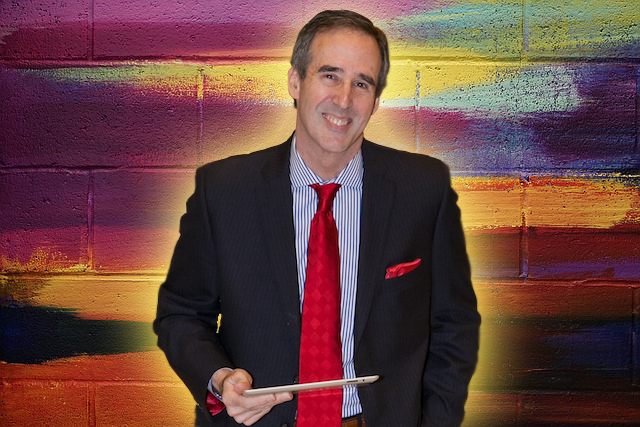Mike Wittenstein: Part 2
If you’re looking to provide a transformational customer experience, don’t follow a generic set of rules and principles.
Mike Wittenstein, founder and managing partner at Storyminers in Atlanta, is a customer experience designer and consultant who helps retail and service firm leadership teams improve the experiences of their customers. You can read about what he offers as a speaker and consultant at http://mikewittenstein.com/.
In Part One of this interview, Mike described customer experience design and its importance in his own words.
In Part Two, we discuss why a one-size fits all approach doesn’t work for customer experience design and other common misconceptions surrounding the concept. We also talk about the mindset required by management and staff to set the right tone for overhauling an approach to customer design and the necessary preparation.
Mike Wittenstein: It’s the total experience. It touches all senses and should give customers a strong sense that you’re doing something better for them; strong enough that they get a good feeling about you and your business. But it’s up to each brand to determine what creates those good feelings in a customer—and which ones they want most.
SSCS: I get the sense from your last comment that you aren’t endorsing a one-size-fits all approach.
MW: You’re right and it’s important for a company to realize it. You can’t take the DNA from one brand or the experience design clues from one encounter, stick them in another, and expect them the same results. Each business is different; it’s got its own history, its own rules; its own founding partners’ lines of thinking. You can’t just check some boxes on Company A’s list and expect them to have a positive effect on Company B’s culture or its bottom line.
For example, Chick-fil-A is credited with bringing the phrase “my pleasure” into the quick service lexicon as a replacement for “thank you.” Now, everyone seems to be doing it. At Chick-fil-A, it just feels right and when you hear it you feel appreciated. At other stores, its use comes across as insincere or copycat-ish.
The tendency to view customer experience in generic terms is one of the biggest misconceptions I see when I’m out in the field consulting.
SSCS: What other common misconceptions have you seen?
MW: One that’s really not a misconception—it’s a mistake—is ignoring the reality that some core business process must be done differently and better. The need for changing the status quo is more urgent than ever before because the lines between product and service categories are blurring. (Many customers still keep Yellow Pages headings in mind.) If someone is treated well at hotel X, the memory of that experience is carried over as an expectation to restaurant Y, which becomes a must-have at C-store Z. It may not be fair, but that’s the way things are working today. As a result, everyone has to up their game if they want to stand out as an experience from their customer’s perspectives.
Another common error is the tendency for leadership to focus exclusively on things and forget the essential role human beings play in creating a memorable commercial destination. No matter how much technology, signage, LED lighting, or entertainment is in the store, the experience won’t rock unless your people are the stars at the center of it all. A smile, a clear greeting, extra personnel to help guide visitors through the aisles—these experience design details resonate greatly. Remember, too, that it takes a lot of energy for staff to pull it off, so you must give a great employee experience to your team before you can expect them to give a great experience to your customers.
SSCS: What are the biggest challenges you run into when you try to get an operator to embrace modern customer experience design?
MW: Most leaders become leaders because they’re good at thinking a certain way, but you just can’t “optimize” your way to a superior customer experience as an engineer or accountant might. Trying new approaches requires totally different thinking.
If leadership is having a difficult time breaking out of their existing mindset, there are some methods you can use to “soften things up.”
My first recommendation is that the owner or manager shop their own store touching every channel. Make notes on your shopping goals and take pictures of your experience to support them. (If local laws allow, record your experience using a body camera.
It’s up to the owner/manager to notice what goes right and what doesn’t—not from their own perspective, but from the customer’s. How are they greeted? How did they feel when they walked in? How easy was it to find what they wanted? Did the sales person just ‘sell’ or did they truly help in the buying process? What did they learn from the time they entered until the time they left?
After that, the owner/manager can broaden their research to include visits to other kinds of stores in other channels. This, so the undercover shopper experience can seep in without specific industry knowledge getting in the way. Less tenured people can help because they see situations with fresher eyes. Staff can compare what they see to what the customers see. The most important thing to do with the findings of an undercover shopping experience is to discuss what matters most to the customers and how the store can deliver it.
SSCS: Is there another way to get similarly valuable results that involves the store level personnel?
MW: Absolutely, gather some of your employees for a few hours, give them a short list of specific things to pay attention to, and visit three different businesses: a restaurant where you can have lunch, a store, where they can buy something small, and either your own store or to a competitor’s. Photos and camcorders make storytelling around the visits much easier when you get back to the office, but again, make sure you can do it legally.
Once you’ve been to all three locations, arrange a workshop area with some poster boards. Use pictures and some post-It notes to capture details as you recount the journey through each of the stores. Compare what you learned. See what stands out. Learn what resonates with people.
SSCS: So, to summarize, if you had one thing to say to someone feeling skeptical about the worth of customer experience design, what would it be?
MW: The one thing that makes convenience store updates and improvements hardest to implement is the absence of a single picture of the future state and how you want to get there. Customer experience design fits that picture on a single page. It emphasizes the customer’s point of view so that your front line and field teams can see where they should be headed. Customer experience design means fewer problems for you and faster achievement of your goals.
In part 3, the last part of the interview, Mike discusses the nuts and bolts of implementing a customer experience design strategy in a store, and summarizes the ultimate benefit of all this hard work. Click here to access it.







Leave A Comment